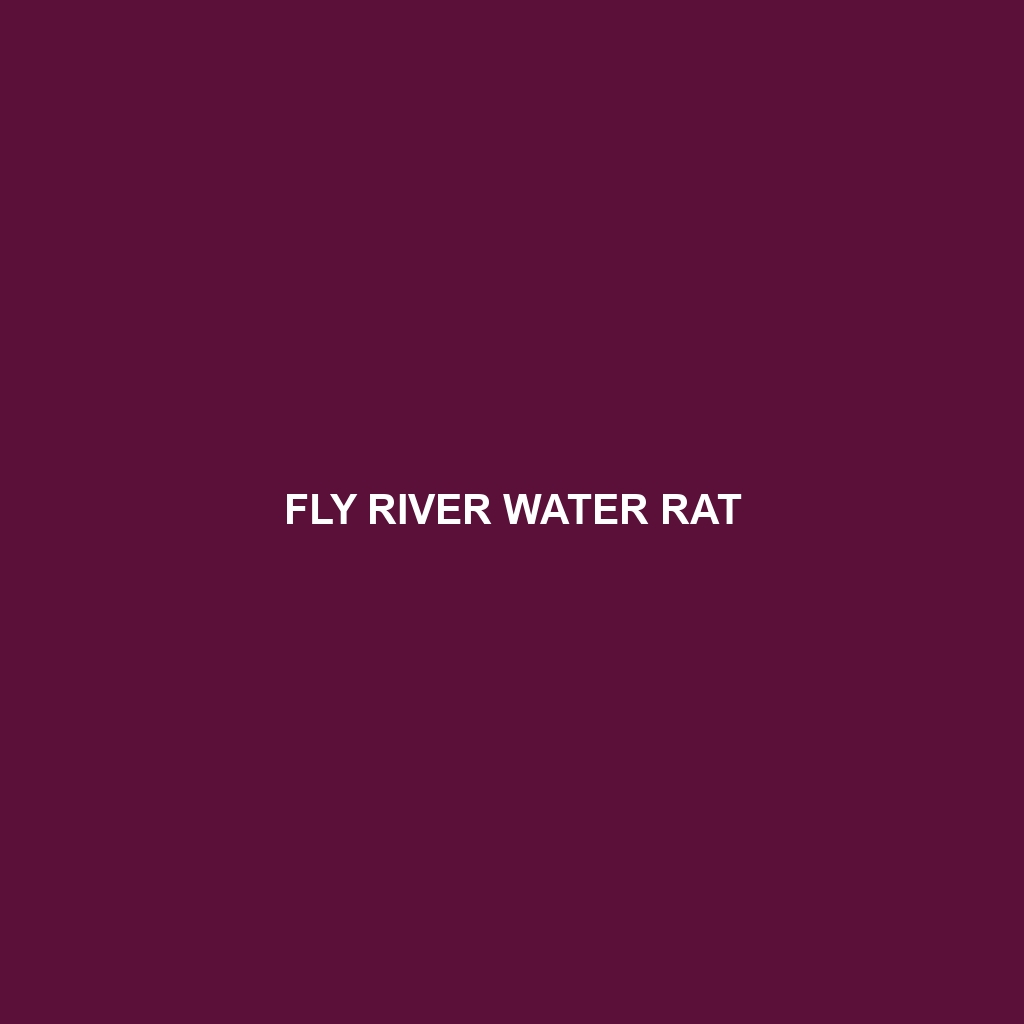Fly River Water Rat (Scientific Name: )
Common Name: Fly River Water Rat
Scientific Name:
Habitat
The Fly River Water Rat is primarily found along the banks of the Fly River in Papua New Guinea and parts of the nearby coastal wetlands. These semi-aquatic rodents prefer freshwater environments including rivers, streams, and lagoons surrounded by dense mangrove forests and grasslands. Their habitat is crucial for providing food and shelter, making it an essential part of their lifestyle.
Physical Characteristics
This species is characterized by a robust, stocky body that can reach up to 50 centimeters (20 inches) in length, including the tail. The Fly River Water Rat has a thick, elongated tail that aids in swimming. Its fur is typically dark brown or gray, featuring a lighter underbelly. Notable features include webbed feet, which enhance its agility in water, and sharp incisors adapted for gnawing on various plant materials.
Behavior
The Fly River Water Rat is primarily nocturnal, exhibiting a range of behaviors such as foraging for food at night. They are skilled swimmers and often dive to catch fish or gather aquatic vegetation. Communication through vocalizations and scent marking is common, making them fascinating to observe in their natural habitat. Their social structure typically includes solitary or small family groups, which can be intriguing to wildlife enthusiasts and researchers alike.
Diet
The diet of the Fly River Water Rat mainly consists of aquatic plants, invertebrates, and fish. They are opportunistic feeders, often foraging along the riverbanks for insects and crustaceans. Occasionally, they may consume small mammals or birds. This varied diet not only sustains the Fly River Water Rat but also positions them as a crucial component in the food web of their aquatic ecosystem.
Reproduction
Breeding season for the Fly River Water Rat typically occurs during the wet months, when resources are abundant. Female rats usually give birth to litters of 3 to 6 offspring after a gestation period of about 4 weeks. The young are weaned by 3 weeks but remain dependent on their mother for several months. Nesting often takes place in burrows or dense vegetation near water, providing safety and warmth for the pups.
Conservation Status
Currently, the Fly River Water Rat is listed as vulnerable due to habitat degradation and increasing human encroachment on their wetland habitats. Conservation efforts are vital for ensuring the survival of this unique species, as they play a significant role in maintaining the ecological balance of their environment.
Interesting Facts
One fascinating aspect of the Fly River Water Rat is its ability to remain submerged for up to 5 minutes while hunting for food. Additionally, it is one of the few rodent species known to have adapted to a semi-aquatic lifestyle, which helps distinguish it from other rodents in the region.
Role in Ecosystem
The Fly River Water Rat plays a critical role in its ecosystem by aiding in the control of aquatic plant populations and serving as prey for larger predators. Its foraging activities help maintain the health of freshwater habitats, making it an important species for ecological stability in the Fly River region.
